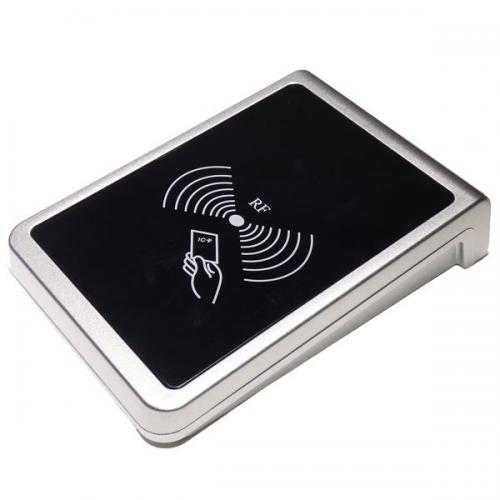RFID, the best solution for Automatic identification

Object tracking and management is the primary function of RFID tags.
Radio Frequency Identification tags work on the mechanisms of electromagnetic
fields. Till before RFID tags, bar codes were used in the Automatic tagging
industry. Then the RFID inventory management solutions, proved such
efficient, that it quickly replaced bar codes. RFID gained its popularity in the
AIDC industry, completely based on the benefits of electromagnetic signal
transmitting. The simple reason behind choosing RFIDs over pre-existing systems
is its ability to carry information.
Barcodes and the likes, work on optical signals that are on a frequency lower to EM signals. Meaning they will carry lower volumes of data. On the other hand, X-rays, UV and gamma rays can also carry a huge volume of data. However, they care harmful to human health; automatically, leaving the RFID and its electromagnetic signals, the best choice in sight.
The
science behind RFIDs
The science behind RFIDs is very simple. They work on the fundamentals
of signal transmitting and receiving. Hence, every RFID tag maker builds these
tagging systems with three critical components. The small RFID labels are
attached with the product to be tracked and carry digital information about it.
A RFID receiver antenna, that communicates with the label on one end and a
computer on the other. And third, an integrated microchip (also in the
receiver), in which the product information is written.
How
RFIDs work?
All RFID tags and RFID readers in India, work on the same logic.
There needs to be a label attached to the intended product. And there needs to
be a reader for signal transmission. Commonly, when a product arrives near a
reader, the reader transmits signal through its antenna. This signal is
essentially an enquiry to the label on the product, asking for product
information. The label then replies back with relevant information, via,
electromagnetic signals. The received data is then written on the microchip
within the reader. Once again, the reader sends the data onto the computer
system, where it is taken up for logistics and management purposes.
Types
of RFID
Fundamentally RFID has two types -active tags and passive tags. The
difference between them is based on their frequency and power management.
Active tags work only on 433MHz and 915MHz, where passive RFIDs work on low
frequency (125-134 KHz,) high frequency (13.56 MHz) and ultra frequency (865-960 MHz.)
Post Your Ad Here
Comments